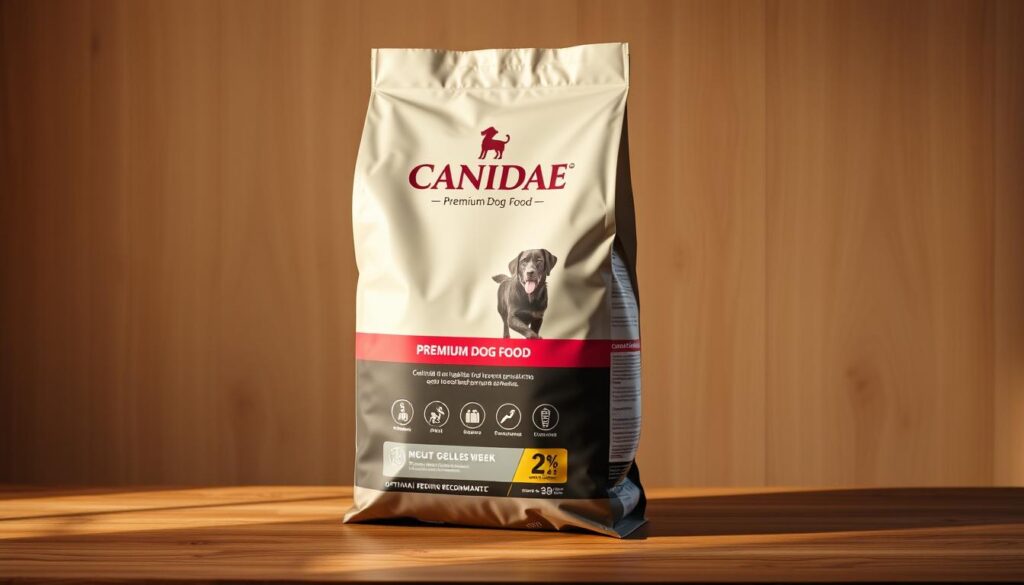Feeding your dog the right amount of Canidae dog food is key for their health. Finding the right amount can be tricky, but it’s crucial. Canidae dog food is a favorite among dog owners, and knowing its nutritional value is important.

Every dog is different, needing different amounts of food based on their age, size, and how active they are. As a dog owner, it’s important to feed them in a way that meets their specific needs. This way, you can help your dog stay happy and healthy. Canidae dog food can be a great choice to give them the nutrition they need.
Key Takeaways
- Feeding your dog the right amount of Canidae dog food is crucial for their health and well-being.
- Determining optimal dog feeding amounts depends on factors such as age, size, and activity level.
- Canidae dog food is a popular choice among dog owners due to its nutritional value.
- A personalized approach to feeding is essential for meeting your dog’s unique needs.
- Adjusting dog feeding amounts based on individual needs can help ensure a happy and healthy life for your dog.
- Canidae dog food can provide your dog with the necessary dog nutrition for optimal health.
Understanding Canidae Dog Food Basics
Canidae dog food is a top pick for many pet owners. It’s known for its quality ingredients and nutritional value. To pick the right food for their dogs, owners need to know the basics.
They should understand the different types of Canidae food. Each type offers unique benefits for their dog’s health.
The nutritional value of Canidae dog food is a big plus. It uses whole grains and has high protein. This mix helps dogs get the nutrients they need to stay healthy.
Canidae offers various food types, like grain-free and limited ingredient diets. There are also formulas for different life stages. Knowing these options helps owners choose the best food for their dog.
- High protein content to support muscle growth and maintenance
- Whole grains for added fiber and nutrients
- Limited ingredient diets for dogs with food sensitivities
- Life stages formulas to support dogs at different stages of life
By considering these points, owners can give their dogs the best nutrition. This helps them live happy and healthy lives.
How Much Canidae to Feed a Dog: General Guidelines
Figuring out the right dog feeding amounts involves several factors. The general feeding guidelines change based on your dog’s age, weight, and how active they are. A Canidae feeding chart can help find the perfect food amount for your dog.
First, it’s key to know the basics of dog nutrition and how it affects dog feeding amounts. Here are some basic tips to remember:
- Puppies need more food per pound of body weight than adult dogs
- Active dogs need more food than dogs that don’t move much
- Dogs with health issues might need special diets or general feeding guidelines
A Canidae feeding chart can guide you in figuring out the right food amount for your dog. It’s also crucial to watch your dog’s weight and adjust their dog feeding amounts as needed.
By sticking to these general feeding guidelines and using a Canidae feeding chart, you can make sure your dog gets the nutrients they need to stay healthy.
